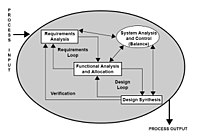
Photo from wikipedia
Abstract As fish feeds are increasingly being formulated with a variety of economical protein sources, more attention needs to be paid to ensure that the essential amino acids (EAAs) requirements… Click to show full abstract
Abstract As fish feeds are increasingly being formulated with a variety of economical protein sources, more attention needs to be paid to ensure that the essential amino acids (EAAs) requirements of the fish are met adequately. A novel factorial AA requirement model was developed by incorporating the effect of dietary and biological factors on AA requirement and utilization for two salmonid fish species, Atlantic salmon and rainbow trout. The factorial model determines AA requirement of fish based on species, expected body weight gain, body protein deposition, AA profile in body protein deposition, maintenance AA requirement, and inevitable AA metabolism. Simulation using this novel model suggests that EAA requirement (expressed as % diet DM) progressively decreases when the live weight of the fish increases. Atlantic salmon appears to have higher EAA requirements (estimated as % diet DM) than rainbow trout at the same body weight classes, and the rate of decrease in EAA requirement with the increase of body weight appears to be slower in Atlantic salmon. Model simulations also suggest that the composition of the diet composition also influences the estimates of EAA requirements. The novel factorial model could be a helpful tool in formulating cost-effective aquaculture feeds. This modelling approach can be adapted to other fish species.
Journal Title: Aquaculture
Year Published: 2019
Link to full text (if available)
Share on Social Media: Sign Up to like & get
recommendations!